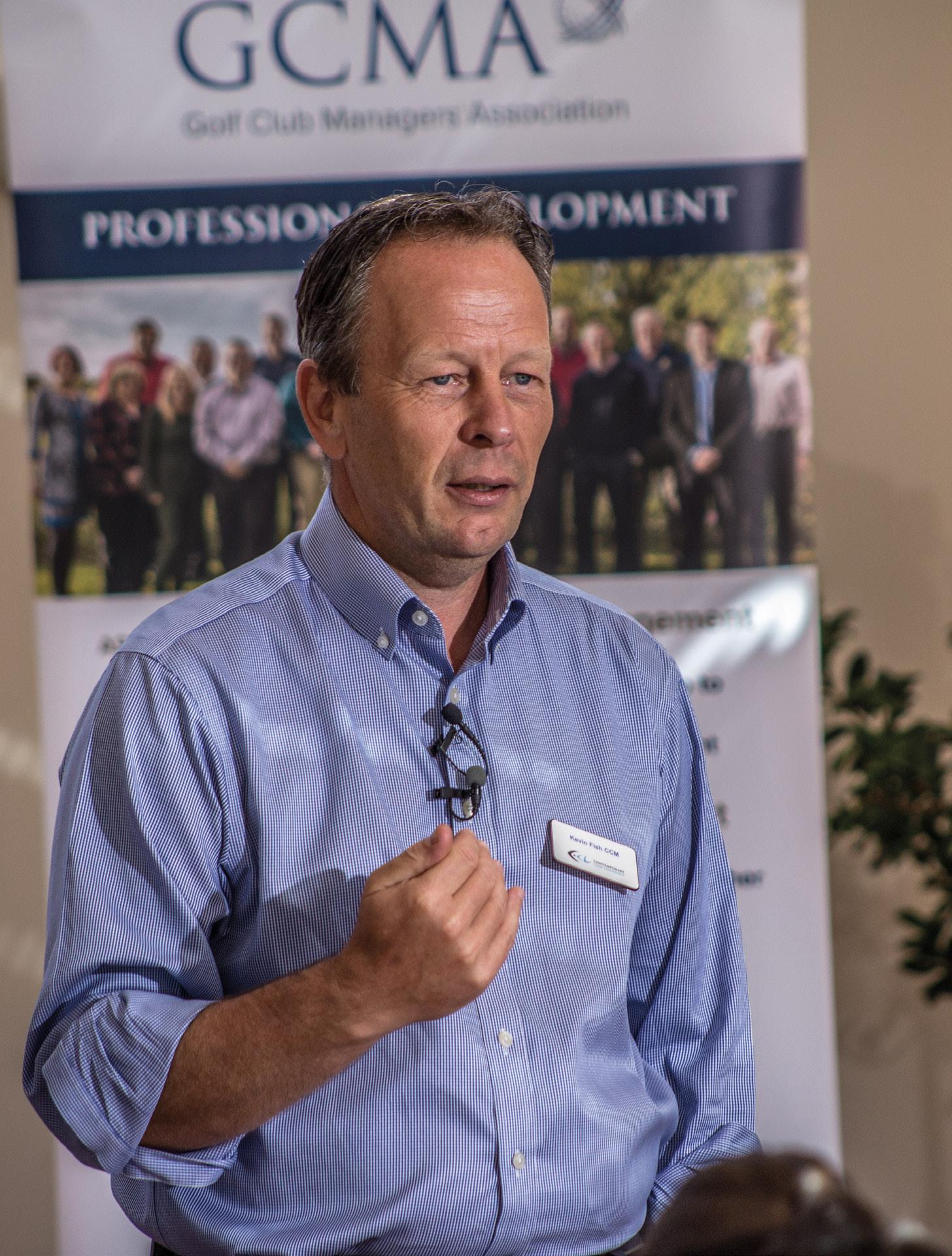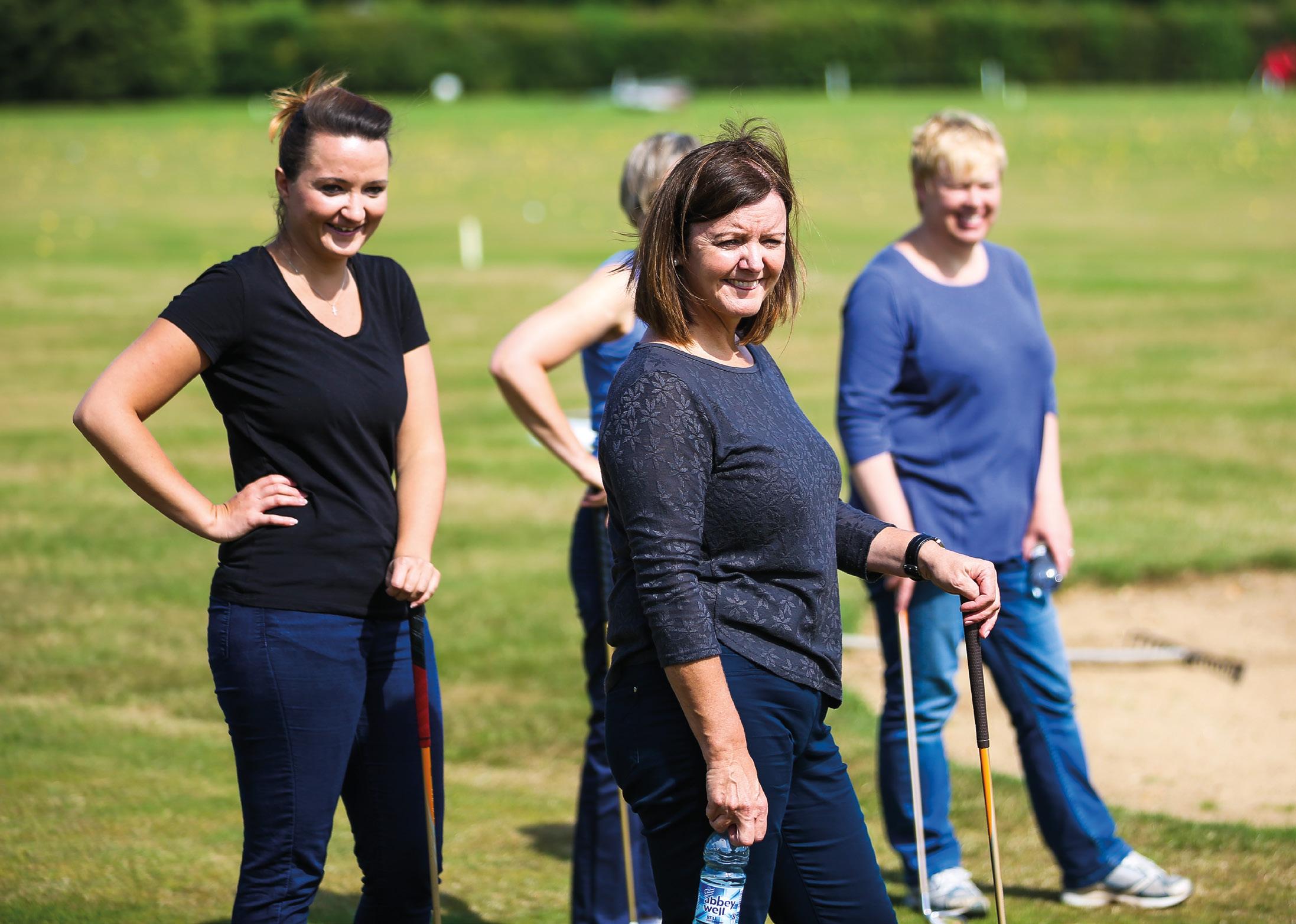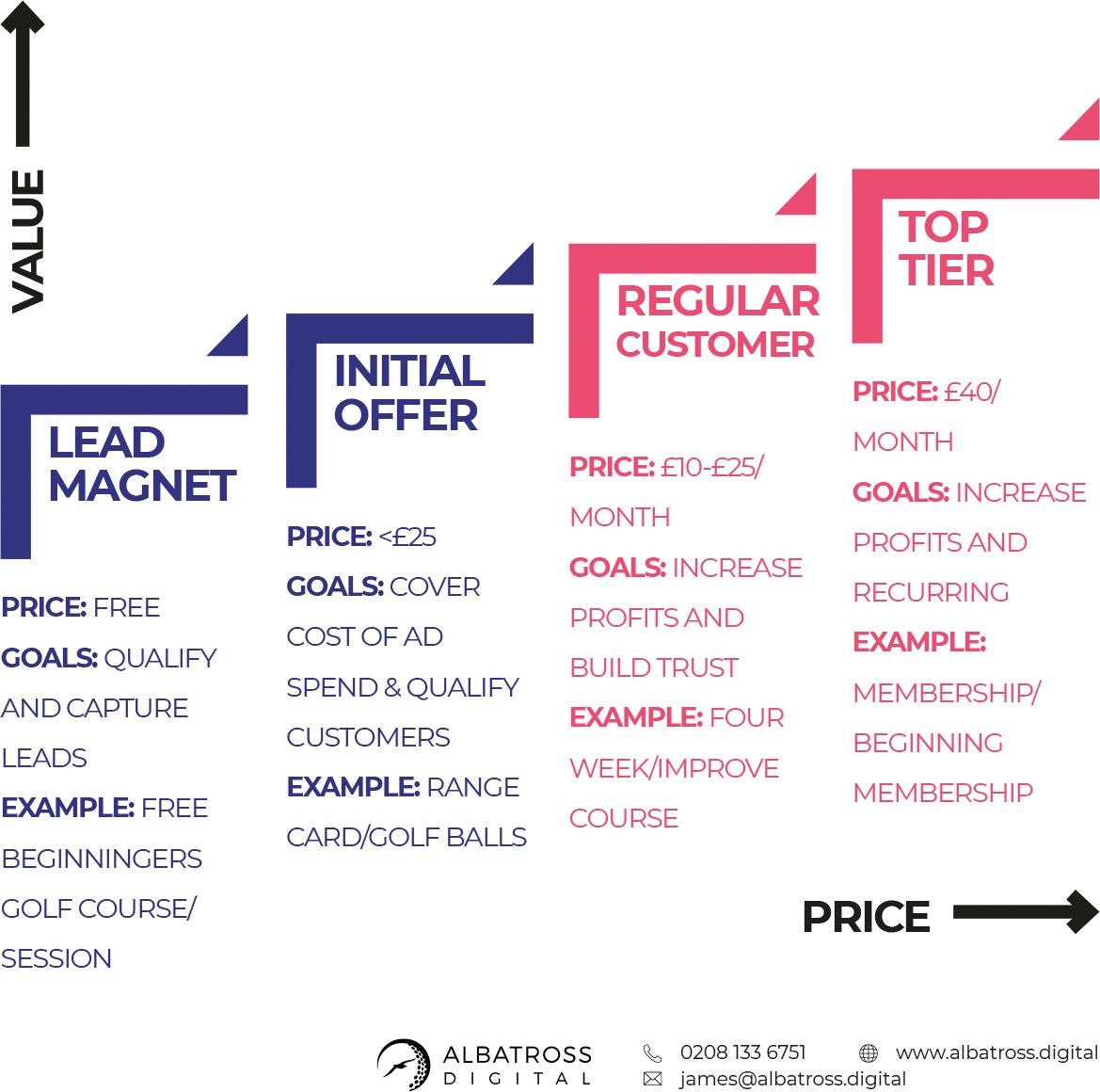
18 minute read
Why two thirds of clubs feel concerned for the future
Two thirds of golf clubs feel concerned for THEIR FUTURE
As clubs adjust to life after lockdown, a survey of over 200 golf club leaders, conducted by Contemporary Club Leadership, revealed worrying headlines. We asked leading golf club consultant Kevin Fish to reveal the themes…
Advertisement
Golf has just had a huge shock. Our clubs are emerging into a new world, having been closed for two months, and there is major uncertainty about what that future will hold.
So perhaps it should be no surprise that a lockdown survey, conducted by Contemporary Club Leadership, revealed two thirds of clubs felt concerned about whether they would be able to survive the pandemic’s impact.
The headlines were alarming as clubs fear resignation rates will top 10 per cent and respondents reported more than a third of green revenue up to the end of May will be lost.
We asked industry expert, and CCL owner Kevin Fish, to interpret those figures and reveal how the sport can come through these unsettling times…
These are worrying statistics. Why are club leaders reacting this way? Some clubs have just had a big wake up call. The lockdown has forced many to take a much closer look under the bonnet at what you might call their economic engine, and it has become clear that some wish they had done so much sooner. Before this crisis emerged, over 100 UK golf clubs had shared their full year-end accounts with us, so we knew from that analysis that the pressures on the industry were already mounting. We know that clubs make over 90% of their gross profit from just two sources – members’ subscriptions and visitors green fees – and, frankly, there doesn’t seem to be enough of either to go around.
How hard has the lockdown further impacted clubs? The first responders on the scene certainly helped to stem the bleeding, but the Government’s furlough scheme won’t go on forever. The Lockdown Survey tells us that, on average, resignation levels are currently running at 8% - well over the yearly average of 6%. Those same clubs surveyed also estimate the resignation rate will rise to 11%, which really bites into club profits. With the “visitor stopcock” turned off, this also results in 37% of green fee income being written off this year.
Is the lack of food and beverage options also punishing clubs? While there is no doubt golfers will be missing the opportunity to start or finish their round in the clubhouse, all the club managers can tell you that financially, very few clubs will be missing out on a meaningful contribution from food and beverage operations. CCL has the accounts of well over 100 UK golf clubs, and we can tell you that almost half fail to generate a profit from their clubhouse operations. It certainly doesn’t account for much of the club’s gross profit, which committees often fail to note is made up

2020 SURVEY OF CLUB LEADERS
Fact – Resignations running at 8% Fact – Typical resignations at those clubs 6% Opinion – Resignation rates will rise to 11%
Fact Fact Fact – 37% of green fee revenue lost to the end of May – 23% of green fee deposits refunded – 77% of visitors intend to return to the club
Sample of data from CCL barometer analysis of 100+ club accounts
Fact Fact Fact Fact – Typical cash reserves at clubs – 4 months of trading – Typical level of commercial debt – 10% of operating revenue – Typical number of full voting members – 436 – Typical resignation rate – 6%
almost entirely by members’ subscriptions and visitors’ green fees. Committees should look at their food and beverage provision as a crucial social cement, which helps build a connection to a club and its members – and that is something clubs are missing right now.
What about the surge in demand for golf we are currently experiencing? Yes, I believe German football has had an unexpected boost too. GCMA members will remember that in the fortnight leading up to lockdown our tee sheets had never been busier and, as we gradually unlock, we are seeing the same surge. This is fantastic. It tells us that lots of people want what we are offering and, in our members’ eyes, we can clearly see that absence has indeed made the heart grow fonder.
Managers are also telling me that membership enquiries are up, but so is interest in the Bundesliga, and god help the poor barman at the Auld Hoose in North Berwick when those restrictions are lifted!
What is crucial is that clubs must work harder at wrapping their arms around those new customers because when this recession bites, and it will bite, there will be an awful lot of people calculating what constitutes a non-essential purchase. Next year could be even tougher for clubs and this is also reflected in our industry survey results, with over half of clubs still fearful for their future one to three years from now.
What can clubs do to help their situation? Before Committees go blaming the lockdown for all of their woes, they must first take a much closer look at their economic model.


LOOKING FORWARD CONFIDENCE LEVELS IN CLUBS
Short Term = 2020 Medium Term = 1 to 3 years
Long Term = after years Key:
Very Concerned Somewhat Concerned Somewhat Confident Very Confident
Many of our clients are following our rallying call to remind their members that they are far more than just customers.
They are owners, shareholders and custodians of the club, and if they want their communities and future generations to enjoy the same opportunities to play golf that they have enjoyed, then those members must do everything that is required to see the club not just through this challenging period in our history, but beyond.
Is golf in trouble? We will lose some clubs in this crisis but, for them, the brushwood was already incredibly dry. But golf clubs also have an opportunity to use this crisis to review exactly why they are here. For some, they can satisfy a market of golfers who are “just passing through”. They want access to a golf facility and little else, and will respond well to a product that meets their financial as well as service level expectations.
For others, while change is in the air, there is an opportunity for club leaders to re-evaluate why the club exists.
What are the key ingredients, and how has the lockdown made people think of “club”? Those leaders can focus on putting club back into clubhouse, create a compelling purpose to be a member, and evidence that commitment with every decision they make. They can

WHO IS KEVIN FISH?

Kevin has over 20 years of experience in the golf club industry. A former club manager at the Glen Golf Club, in North Berwick, from 1999 to 2008, he was named the GCMA’s Manager of The Year in 2004. In 2008 he became the first club manager in Europe to be awarded the global designation CCM (Certified Club Manager). He went on to work for the Scottish Golf Union for seven years, selecting and leading a team that provided support to hundreds of Scottish golf clubs. He has been integral to the introduction of structured education for club managers throughout Europe and is now the go-to person in our industry for club governance, business planning and financial benchmarking. He has been invited to address the World Conference of Club Management on over a dozen occasions and now runs his own unique training, recruitment and consultancy business, Contemporary Club Leadership, whose aim is simply to help club leaders do the right things right. For more, visit www.ccl.services, email kevin@ccl.services or call 07398 155908
create a genuinely welcoming and contemporary club to meet the social trends in their area, and in doing so establish a conveyor belt of future members who see themselves as belonging to that club and attaching themselves to its style.
What is the one thing that helps clubs the most right now?
Clarity of thinking. Club managers and committees often say that our intervention feels like a trip to the Doctor, where we openly share the results of a thorough medical, and work with those leaders to improve the health of their club with a range of sensible life style choices.
Managers know that their clubs have many brilliant wellintentioned volunteers, but their love of the club, and the peculiar nature of club committees, means that quite often they can’t see the wood for the trees.
My job is to help managers keep committees out of the trees, and find the fairway instead. However reluctant we may be, we all benefit from a swing check from time to time.
ARE YOU LOOKING TO DRAMATICALLY INCREASE YOUR MEMBERSHIP, GROUP BOOKING AND EVENT ENQUIRIES ON YOUR WEBSITE?
INTRODUCING THE
CHA TBO T
70%
It is said that an astonishing 70% of visitors who abandon your website will never return.
It’s more important than ever to be capturing visitors attention and turning them into quality leads. Our brand new chatbot sits on your website 24/7 enabling you to communicate with customers by automatically handling detailed booking enquiries around the clock for your sales team to follow up with.
Can I help you?
Enquire now
210%
Albatross clients who have used the Albatross Chatbot have seen an increase in website enquiries of over 210%
GET YOURS FREE
SCAN TO FIND OUT MORE AND SIGN UP FOR YOUR CLUBS FREE CHATBOT NOW
OPEN UP YOUR SMARTPHONE CAMERA, POINT YOUR PHONE AT THE QR CODE, CLICK THE LINK ON SCREEN OR DOWNLOAD QR CODE SCANNER FROM GOOGLE PLAY OR THE APP STORE. ALTERNATIVELY, VISIT THE LINK BELOW.
qrco.de/albatrosschatbot
The £2.9bn opportunity sitting UNDER OUR NOSES
Albatross Digital’s James Wilkinson reveals how you can get your slice of the pie through running profitable Beginner Golf campaigns
Unprecedented, extraordinary, incredible are just a handful of words that have been used to describe the week golf clubs in England reopened their doors on May 13, 2020.
While some clubs have seen membership numbers of over 100 sign ups in under a week, there will be many other clubs out there that aren’t feeling the fruits of these jaw-dropping numbers flying around on social media channels like LinkedIn.
Essentially, bar a few more exgolfers potentially dusting off their clubs, or newbies trying the game for the first time, the underlying problems with golf participation are still very prevalent. The stats over the years are there to be seen and there have been so many column inches written about this I won’t waste anyone’s time regurgitating them.
While membership might seem buoyant currently for some, I still see many cut price offers being advertised by clubs to attract new members. Offers such as these will leave a sour taste in the mouth of the members who stuck by their club during the lockdown.
With the impending ‘recession like we’ve never seen’ around the corner, I predict that these underlying participation problems, particularly when it comes to traditional membership categories, will severely worsen over the coming years unless something is done to invest into the grassroots of the game. Once recession kicks in, people will not think twice about cancelling their membership Direct Debit when they’ve just lost their job and have no prospect for work on the horizon.
THE LONG TERM - WEALTH Last month, I wrote about some short and mid-term marketing solutions in a post Covid-19 world.
Now I write about how I believe the smart golf clubs can generate long-term wealth by tapping into a demographic of latent golfers (“non-golfers” who say they’re interested in playing golf) sitting under our very noses. A potential market that, according to Syngenta’s Unlocking Golf’s True Potential report, is worth £2.9bn in the UK.
To put it into perspective, if all 2,500 golf clubs in the UK were to equally share just 25% of this reported £2.9bn, each club would generate £290,000 in new revenue.
And what is this magical market of untapped potential? According to Syngenta it is quite simply, female golfers.
So why is it that the industry from the top down is failing to even scratch the surface when it comes to attracting female golfers into the game? With only 16% of golfers female in the UK*, how is it that we are so far behind the US (23%), Canada (30%), Sweden (29%) and South Korea (29%)? *as of 2016 according to Syngenta’s Unlocking Golf’s True Potential report
With an encouraging latent demand of female non-golfers who are ‘very interested’ or ‘interested’ in taking up golf, I can only put the lack of take-up as one of three things: 1. Clubs are not interested or welcoming enough to female golfers 2. Beginner golf programmes and player pathways aren’t doing their job properly 3. The marketing strategy golf clubs use to attract and convert non-golfers into the game is not executed well enough
Going on the success we have had with our clients, who are eager to

welcome as many females to the game as possible, my firm belief is the reason why golf fails at attracting females into the sport is this…
Expecting golf clubs to run complex and time consuming marketing campaigns to attract fresh people into the game is unrealistic and not sustainable.
The vast majority of clubs do not have the expertise in house to be able to execute a multichannel marketing campaign that can generate beginner golfers at the level required to make any significant changes to the level of participation in the game.

The governing bodies can hand out all the ‘do it yourself’ guidance in the world to clubs, however it is very difficult to execute a profitable, scalable, sustainable and trackable beginner golf programme unless someone at that club has the marketing knowledge or the time to learn how to set up a campaign that consists of: • Facebook ads • Google Ads • Email marketing • Landing page building software • Conversion Rate Optimisation (CRO) • Copywriting, and the numerous other digital marketing tactics it takes years to master.
Traditional beginner’s golf scheme For beginner golf schemes to work at clubs they have to be profitable to the club and the professionals long-term. Golf clubs cannot, and should not be expected to, make a loss on recruiting new players into the game.
This appears to be the number one deterrent I hear when speaking with managers and owners on why they do not invest into the grassroots.
Here’s what I believe are the fundamental flaws in most current schemes and why they have
failed at scale in the past. The core marketing components to most beginner golf schemes I have seen executed are: 1. Print marketing - Put up some posters and leaflets around the golf course facilities 2. Email marketing - Send an email to your members and visitors databases (from our experience on average circa 1,000 contacts) 3. Social media - Organically post on the club’s social media accounts 4. Word of mouth - Talk to your members and visitors and ask them to spread the word 5. Offers - Request people pay £25 to £50+ to sign up a four

to six week programme before they’ve even picked up a club 6. Duration - Run for a short period of time in the middle of summer
The first flaw in this strategy is it is very difficult to scale campaigns like this. Once the initial flurry of attracting beginners has passed there is no way of getting more eyeballs (reach) on your promotion. Essentially this means most clubs can only run these types of campaigns once or twice per year before they fatigue.
The second flaw is that the vast majority of latent golfers will have never considered playing golf before. Golf will not be for everyone who tries it so, in order to convert as many people as possible, we need to get as many people trying the sport as possible.
Asking people to invest £25 before they’ve even turned up to a lesson or picked up a club is a big commitment and will deter a significant percentage of potential golfers.
The marketing adage of this is proposing marriage before you’ve even been on a date. You are jumping in the deep end with a ‘Buy Now’ message which can scare off a number of potential prospects.
How to run a sustainable and
profitable Beginner Golf Scheme I ardently believe the golf clubs that are able to generate more female golfers into the game and convert them into members through a well constructed player pathway will be the clubs that are able to come out the other side in the strongest position. I also believe this is a way that golf can breathe new life into the game.
Having managed and studied a number of profitable beginner schemes, the ones I have seen that are generating over £100,000+ in new revenue each year execute the following rules.

A successful beginner golf scheme needs to: • Generate beginner golfers consistently over a sustained period of time • Use a lead magnet to get people through the door and on site, undertaking at least one lesson before you pitch any sort of financial commitment • Consistently be generating leads through paid advertising channels like Facebook and Google Ads, attracting people who are searching for golf lessons as well as those just browsing social media channels • Have a successful and well structured player pathway programme that converts potential golfers into long-term members over a six to 24 month period
Get this right and the maths adds up. Each club is different and so please take the following figures as a general rule of thumb. However, if you were to run this campaign over a two-year period and by the end of year two you received the following results, I predict many clubs could see a significant boost to their bottom line.
A large club with a range and extensive practice facilities who were able to welcome 225 new beginner members a year:
High Tier Members £40 Per Month Low Tier Members £25 Per Month Range Ball Spend Avg £10 Per Month Secondary Spend £10 Per Month Monthly Revenue Annual Revenue
High Tier Members £40 Per Month Low Tier Members £25 Per Month Range Ball Spend Avg £10 Per Month Secondary Spend £10 Per Month Monthly Revenue Annual Revenue
A small - medium sized club with practice facilities who were able to introduce 100 new members a year:
Units 75 150 225 225 Monthly Revenue £3,000.00 £6,000.00 £2,250.00 £2,250.00 £13,500.00 £162,000.00
The Beginner Golfer Value Ladder I have called this whole principle the Beginner Golfer Value Ladder and it is born out of numerous Beginner Golf campaigns we have run for golf clubs over the past two years.
Fundamentally, the golfer is led through a series of offers that increase in value at the right time depending on what stage the golfer is in their player pathway.
From an initial awareness ‘Lead Magnet’ to their final decision to becoming a full member, it is a sustainable and profitable way for you to grow your beginner golf programme at your golf club and maximise the lifetime value of beginner golfers.
Units 30 70 100 100 Monthly Revenue £1,200.00 £2,800.00 £1,000.00 £1,000.00 £6,000.00 £72,000.00
Over the past month the news has been inundated with articles around looming recessions, serious rises in mental illnesses and obesity potentially causing disproportionate impacts on how people have been affected by coronavirus.
The benefits of golf can help as a remedy to all of these issues while, at the same time, generating new income from the latent demand in the game.
Now, more than ever, is the time for the industry to invest in the grassroots to grow the game. The question is: which clubs are willing to look far enough ahead to invest?

Albatross Digital founder James Wilkinson has helped over 100 golf clubs including Celtic Manor and Woodhall Spa succeed using digital marketing.
He has also spoken and written about how to execute effective golf club marketing strategies for associations and partners including the GCMA, UKGolf Federation, England Golf, Wales Golf, 59 Club, Club Systems and more.
Founded in 2015, Albatross Digital are on a creative and analytical mission to help solve the problems and navigate the challenges golf businesses face in a digital first age.
With offices in London and Surrey, they use industry expertise combined with the latest digital marketing techniques to help clients grow, thrive and invest in their future. Their portfolio includes Woodhall Spa, Celtic Manor, GCMA, 59 Club and over 100 clubs across the UK and Europe.
For more information about Albatross Digital visit https:// albatross.digital and follow them on Facebook, Instagram and LinkedIn. Email James at james@albatross.digital or call 0208 133 6751.





